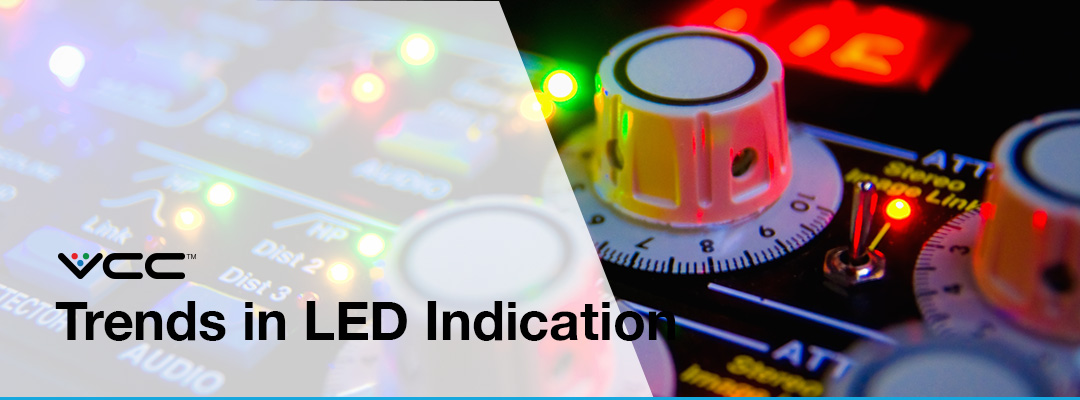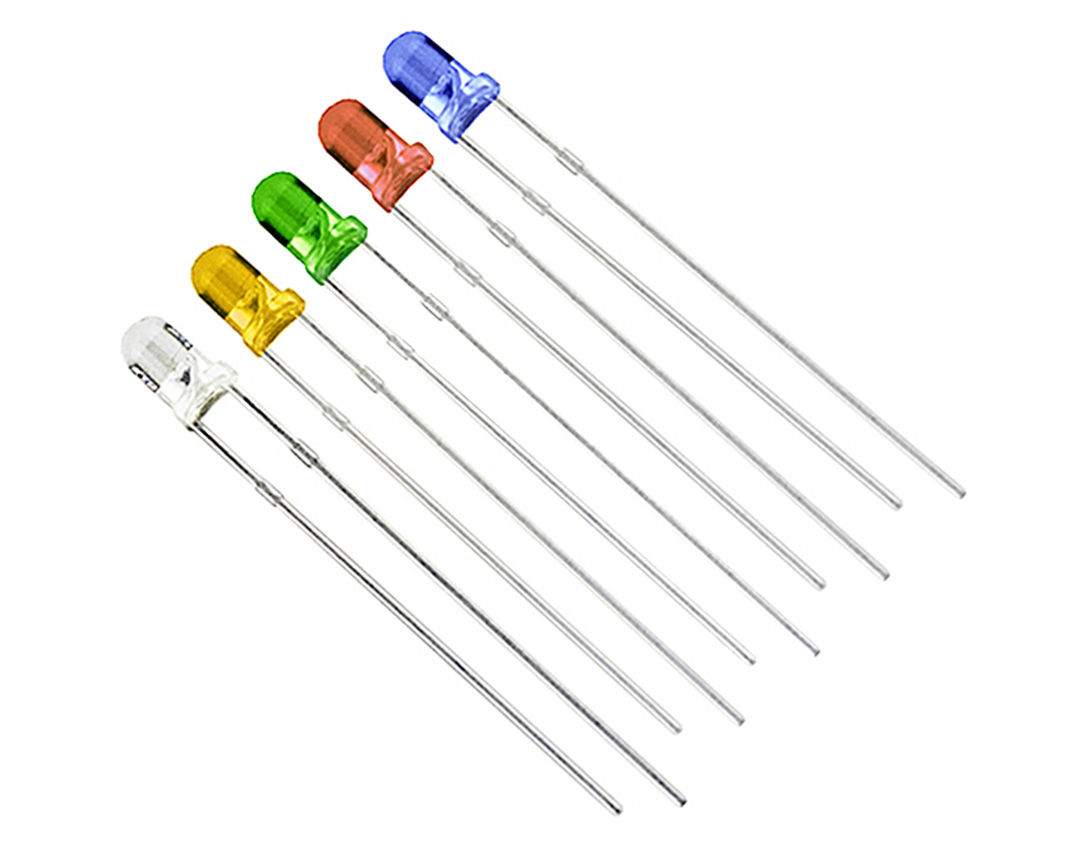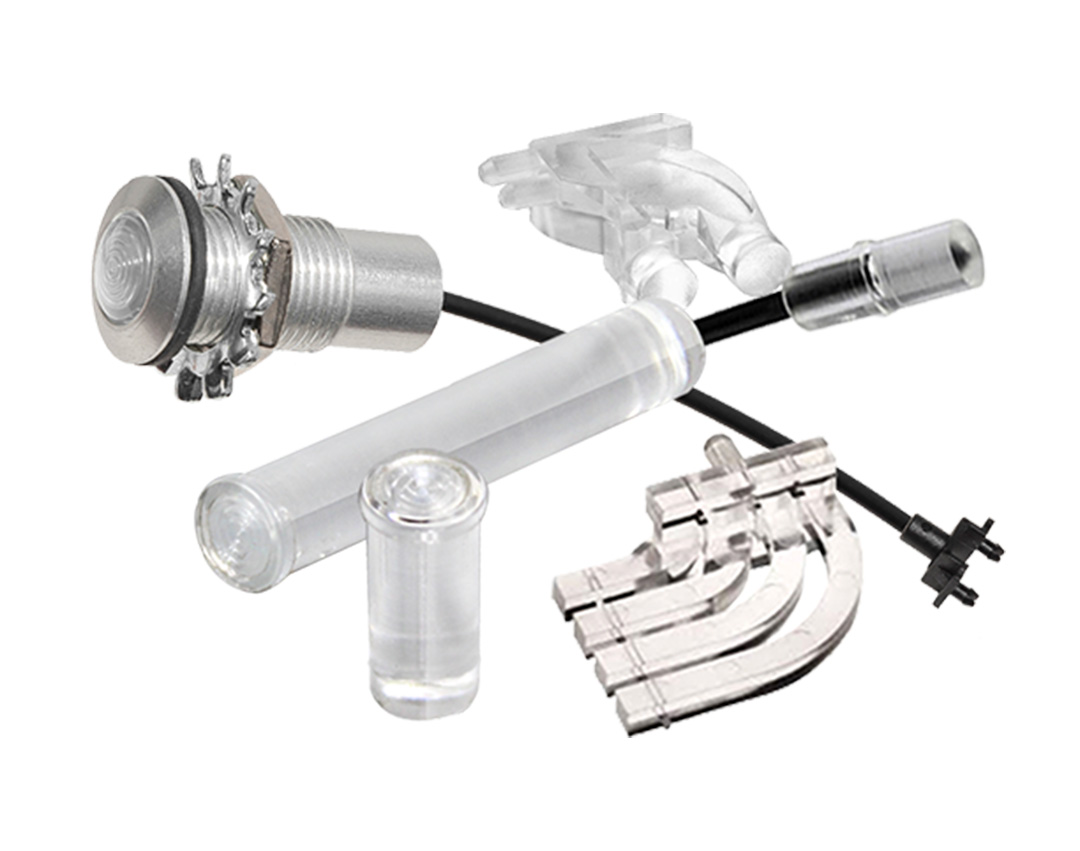
Trends in LED Indication
Across nearly all markets, indication illumination had long been limited to a discrete red LED or a pair of red and green LEDs, which could offer only modest (if any) aesthetic appeal and communicate only the most basic information, such as on/off status or operational/non-operational condition. However, in recent years, the increasing commercial availability and cost-effectiveness of high-quality RGB LEDs and light pipes, combined with their shared ability to simultaneously improve design flexibility while reducing the amount of board space a design’s lighting components occupy, the amount of power they consume, and the amount of heat they generate, has revolutionized the indication industry. Now,
LED indicators play a primary role in the aesthetic appeal and communication capabilities of a broad range of consumer, commercial, industrial, architectural, safety, and transportation products.

RGB LEDs
Color-matched RGB LEDs, which provide exponentially increased functionality in a single, miniature form factor, have been rapidly scaling the ascent arc of the technology life cycle s-curve. Having passed the leading edge phase,
RGB LEDs have become much more cost-effective in recent years, which has significantly expanded the range of industries, markets, and applications for which they are a practical lighting solution. One application that the newly economical RGB LEDs have had a marked impact on is indication functions on electronic equipment, especially in the consumer market.
For decades, the primary trend in indication illumination in the consumer market segment had been a discrete red LED on the front panel of a product. In several other markets – industrial, safety, transportation, etc. – indication has long been limited to dual LEDs: one red and one green. By dramatically increasing the number of colors that can be achieved using a single LED, RGB LEDs have revolutionized the aesthetic and communication capabilities of LED indicators.
Previously, design engineers had to utilize several LEDs to achieve multicolored indication, which, in addition to more lighting components, required more board space, more power, and more or larger heatsinks. Now that RGB LEDs have become affordable enough for mass commercialization, design engineers can choose from an array of economical, multicolored indicators that not only help them satisfy consumer demands for electronics that are lighter, smaller, slimmer, and sleeker than their predecessors, but that also improve their aesthetic appeal and communication capabilities.
Light Pipes
Composed of non-light absorbing optical grade materials with a high total internal reflection (TIR) rating – typically high-purity polycarbonate materials, cast acrylic resins such as polymethylmethacrylate (PMMA), epoxies, or high-grade glass – light pipes, which transport light from a remotely mounted LED to any point on a product’s exterior where illumination is desired, have also had a significant impact on the indication industry in recent years.
Commonly available in straight and right-angled cylindrical or rectangular tubes, as well as in a host of custom configurations and shapes, light pipes free design engineers from the limitations imposed by space constraints, thermal considerations, and electrical layout parameters, allowing them to prioritize aesthetics and user functionality ahead of physical and electrical demands.
Capable of spreading the light of a single LED over a wide distance, or delivering it to several different locations on a product while maintaining both its quality and intensity, light pipes can also significantly reduce the number of LEDs required to achieve a desired illumination effect, providing designers with several physical, electrical, economic, and even environmental benefits.

By enabling the use of a single LED to achieve the effect of an LED array, light pipes conserve the amount of board space required for the lighting components and their heatsinks, reduce overall component costs, and minimize power consumption, which can prove particularly beneficial for design engineers striving to comply with the progressively more stringent green initiatives adopted by a steadily growing number of manufacturers.
Are you ready for next level
illuminated components?
Download our IoT flyer, or contact the VCC team.
Contact UsDownload Our IoT Brochure
Panel Mount Indicator
LED Watertight PMI Build Your Own Indicator Neon Incandescent More
Circuit Board Indicators
LEDs
Latest Products
Check all the Latest Products
Custom Wire Harness
Custom Solutions
Custom Design Capabilities
Technical Resources
Product VideosBrochuresCustom SolutionsNewsCase StudiesFAQsGlossaryVideo Webinar
Purchasing
Product
Videos
Learn more about our products
The Latest
Contact
Contact Us
Call Us 1.800.522.5546
